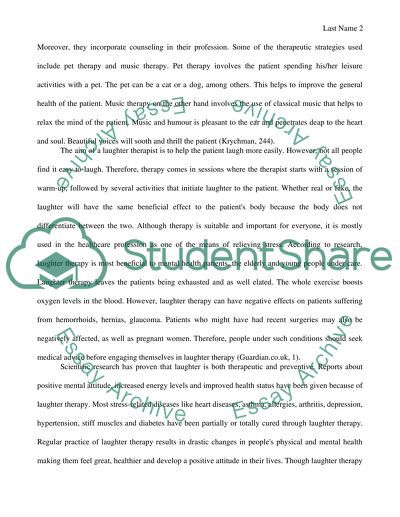Cite this document
(“Laughter Therapy Research Paper Example | Topics and Well Written Essays - 1250 words”, n.d.)
Retrieved from https://studentshare.org/health-sciences-medicine/1454821-laughter-therapy
Retrieved from https://studentshare.org/health-sciences-medicine/1454821-laughter-therapy
(Laughter Therapy Research Paper Example | Topics and Well Written Essays - 1250 Words)
https://studentshare.org/health-sciences-medicine/1454821-laughter-therapy.
https://studentshare.org/health-sciences-medicine/1454821-laughter-therapy.
“Laughter Therapy Research Paper Example | Topics and Well Written Essays - 1250 Words”, n.d. https://studentshare.org/health-sciences-medicine/1454821-laughter-therapy.


